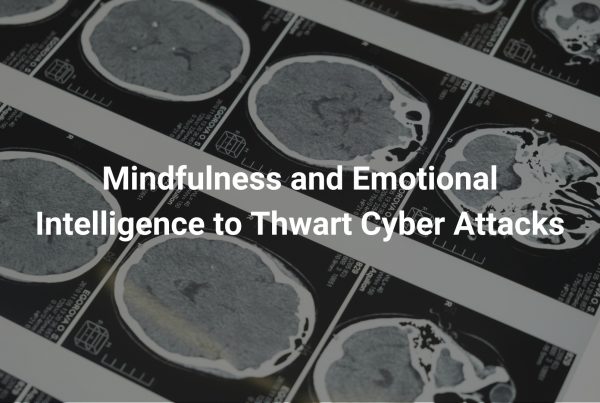Authors: Dr. Abbie Maroño
Published: July 1, 2024
Think back to the last time you cried. Take a moment to reflect on how it felt afterward—not just the emotion that led to the tears, but the sensation afterward. Many of us are familiar with the sense of euphoria that often follows a good cry. It’s as though a weight has been lifted from our shoulders. But that begs the question: why does crying sometimes feel so good, and what happens when we find ourselves unable to cry?
But first, why do we cry in the first place? It is widely recognized that crying is a natural emotional response to a range of feelings, from deep sadness and grief to extreme happiness and relief. However, it is less widely recognized that crying also serves several health benefits, both psychological and physiological.
The most well recognized reason why we might cry is because it provides an emotional release. Indeed, crying is often considered a form of catharsis, allowing for the expression of feelings that might be difficult to articulate, and thus, providing a sense of relief. Research has shown that crying can reduce feelings of anger and sadness by releasing pent-up emotions, leading to a temporary sense of calm or well-being after the crying episode.
But the effects of crying go beyond the psychological. In fact, crying has been linked to the reduction of stress levels because it activates the parasympathetic nervous system (PNS) which plays a crucial role in slowing down the body’s nervous system activity. The PNS is often referred to as the “rest and digest” system because it conserves energy as it slows the heart rate and takes the body out of fight or flight mode. Hence, the act of crying can physically relieve stress by removing stress hormones or other chemicals from the body, which can have a calming effect after the tears have stopped.
What’s more, crying releases oxytocin and endogenous opioids, also known as endorphins, which can help to alleviate physical and emotional pain. This is why you often feel a sense of relief and calm after crying.
However, suppose you are looking for clarity on whether you are crying the ‘right’ amount or not. In that case, the scientific literature does not prescribe a specific “right” amount of crying that applies universally to all individuals. The frequency, duration, and intensity of crying episodes vary greatly among people and can be influenced by numerous factors, including personality, cultural background, current life circumstances, and underlying psychological conditions. However, if you find yourself unable to cry in times of grief and deep distress, or if crying episodes are significantly impacting your ability to function in daily life, it might be time to seek help. This inability to cry will be the focus of the remainder of this blog.
Why can’t I cry?
There are several reasons why an individual might struggle to cry, and diving into each of these would require far more explanation than possible in this blog. Thus, I am going to focus on two separate but interconnected explanations.
Firstly, the denial or suppression of emotions. This is especially prevalent among men, who may feel societal pressure to exhibit strength and control over their feelings. Crying or showing vulnerability is sometimes viewed as a sign of weakness, perpetuating the notion that emotions should always be kept in check. However, this is a natural human response, not a weakness. As such, many individuals may have learned to suppress their emotions as a coping mechanism, driven by a desire to avoid social stigma and maintain a desired public image. Additionally, past experiences of trauma, such as parental neglect, can further reinforce a sense of self-reliance and the belief that nobody will come to our aid. Consequently, when feelings of sadness emerge, there’s a tendency to bury them deep inside. Over time, this habit can hinder the ability to access and express emotions like sadness or grief, resulting in difficulty shedding tears.
This next reason might surprise you. While we often associate depression with increased emotional sensitivity, it can also manifest as an inability to cry. Some individuals with depression may experience heightened emotional reactivity and tearfulness, whilst others may encounter emotional numbness, a feeling of disconnection from their emotions, or a profound inability to shed tears. Empirical research has shown that emotional blunting, including a reduced capacity to experience or express sadness through crying, is a common symptom of depression. Studies have found alterations in brain regions involved in emotional processing and regulation among individuals with depression, which may contribute to this phenomenon. Additionally, disturbances in neurotransmitter systems, such as serotonin and dopamine, have been implicated in emotional blunting and reduced responsiveness to emotional stimuli.
Seeking Support
Navigating mental health conditions is a complex task, and it is important that the information you are seeking to support you on this journey comes from qualified individuals. As such, seeking therapy, particularly cognitive-behavioral therapy (CBT) or Emotion-Focused Therapy (EFT) is highly recommended. Therapists can help individuals explore and process underlying emotions, identify and challenge unhelpful thought patterns contributing to emotional numbness, and develop coping skills to manage distressing feelings. It is important that this process is carried out in a safe and controlled environment.
Empirical research has also shown that mindfulness-based interventions, such as mindfulness meditation or mindfulness-based stress reduction (MBSR), can help to increase emotional awareness and regulation. Mindfulness meditation involves cultivating nonjudgmental awareness of present-moment experiences, including thoughts, emotions, and bodily sensations. By learning to observe emotions with curiosity and acceptance, individuals can develop greater emotional regulation skills. Research has also demonstrated that mindfulness practices can modulate activity in brain regions associated with emotion processing, such as the amygdala, and strengthen connections between brain regions involved in cognitive control and emotional regulation.
However, it’s important to manage expectations, as mindfulness is not always easy to master. Achieving a genuine state of mindfulness and fostering connections with one’s emotions requires time, dedication, and patience. Fortunately, numerous free online resources offer guided mindfulness meditations that can be valuable tools on this journey.
In conclusion, the inability to cry can be a complex interplay of emotional, psychological, and physiological factors. Understanding the underlying cause is important, as it can vary greatly across individuals. For those concerned about their inability to cry, speaking to a mental health professional can offer insights and potential pathways to address this issue. Empathy, self-compassion, and, in some cases, professional support are key in navigating the nuances of emotional expression and well-being.





